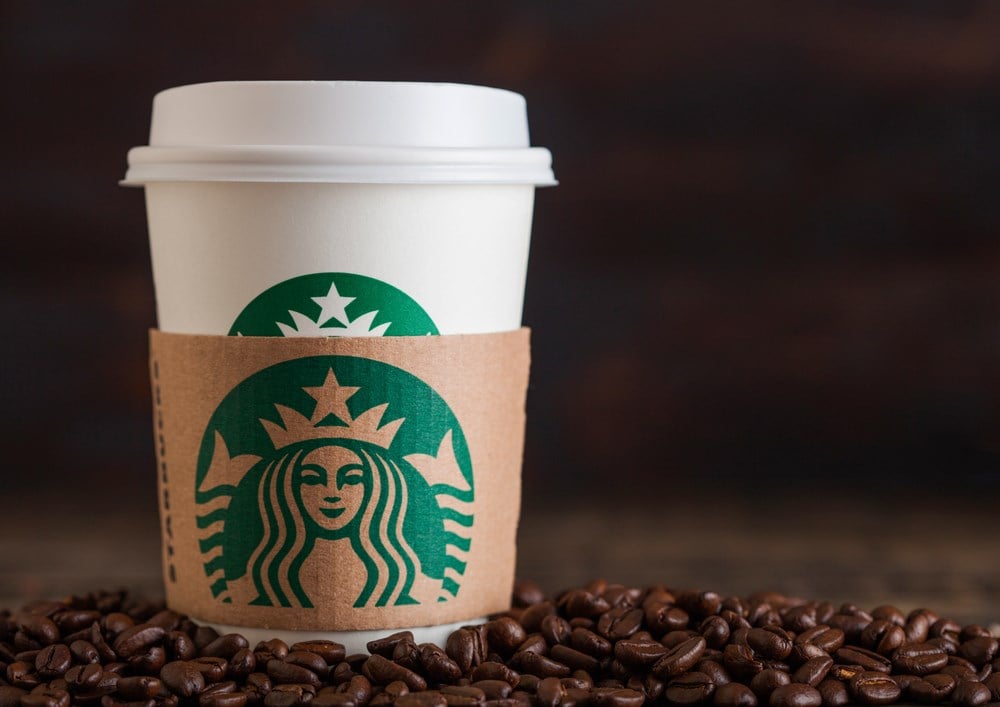
When markets find a moat in a business, the secret will likely be well-kept to avoid a price rally before all the big guys can get in on the action. While not necessarily a blockbuster name today, Starbucks (NASDAQ: SBUX) is one of those resilient moat businesses.
Starbucks is considered a social currency product today, where people get their caffeine fix from the name and a certain sense of inclusion when carrying the green medusa around the office or social scene.
A rare 'eight to eighty' business, where audiences span from age demographics easily fitting eight-year-olds to eighty-year-olds, Starbucks is a clear stand out within the consumer stocks universe. Unfortunately for some, the stock is poised to decline due to non-business-related issues; fortunately for you, this could mean a buying opportunity.
Dragged by the Current
Because Starbucks is part of the Invesco QQQ (NASDAQ: QQQ) ETF, any decline in the index will likely hurt the stock since there is a systemic way to markets, both on the way up and especially on the way down.
On a year-to-date basis, Invesco QQQ has outperformed the SPDR S&P 500 ETF Trust (NYSEARCA: SPY) by as much as 24.1%, creating a wide valuation gap between NASDAQ holdings and S&P 500 holdings. The driving differentiator? High-flying technology stocks and their recent take-offs.
Because the S&P 500 represents a more significant chunk of the real economy, having more consumer and manufacturing or industry-heavy names does carry a more accurate image of the current economic situation.
Historically, these indices have been correlated by roughly 85%, meaning either the S&P 500 will need to rally or the NASDAQ sell-off will return to normal.
Because the United States consumer sentiment index is as low as it has been in over a decade, some names are beginning to show just how exposed they are to the cycle, not Starbucks. During a year of declining consumer sentiment, the company posted revenue growth of 10%.
How can a strictly consumer-based business, operating within one of the most discretionary items in households, grow its revenues by double-digits when the consumer is perma-depressed and worried about how big of a chunk inflation will take from each paycheck? The answer lies just ahead.
Silver Bullet, at the Right Time
Because Starbucks is so entrenched in society, it can comfortably pass on increased costs to its consumers, who will barely bat an eye at the higher ticket just as long as their coffee still tastes as delicious as always. This pricing power allows the stock to call for investors at any price.
This power dynamic is only set to grow as management has tapped into one of the beauties of collective capitalism. Striking a deal with Target (NYSE: TGT), who is expanding their own footprint like a hiccup, there will now be a Starbucks in virtually every Target location.
By exposing themselves to one of America's favorite shopping environments, Starbucks will grow along with Target. There is also a factor that plays here, as Ulta Beauty (NASDAQ: ULTA) has a similar deal with Target.
If you really think about it, how many customers walk around Ulta with a Starbucks cup, and how many wander the aisles at Target with one as well? If you answered not that many, you must get out more and do some on-the-ground due diligence.
Enough qualitative features; when do the numbers begin to make sense? Sooner than you think. Starbucks's so-called moat and pricing power stick out like a sore thumb in the company's financials.
With a consistent gross margin of over 25%, operating - don't forget - in a large-scale coffee business is something to be in awe of. Over the years, a net margin of over 10% has been made possible by deep customer loyalty and excellent supplier relationships.
How effective is the business at making money? One clear metric investors can use is ROIC (return on invested capital), the bottom-dollar management made with every dollar you invest into the business. ROIC has hovered between 15-20% over the years.
Is this enough? Over the long-term, stock prices tend to move in lockstep with ROIC. Thus, your money could be compounded by these same rates, bringing you to retirement sooner than you think.
Analysts see a 23.6% upside, and the stock offers a 2.5% dividend yield. Considering that it is now at a fresh 52-week low, the time to buy may be around the corner, all up to the NASDAQ decline to close the gap against the S&P 500.


